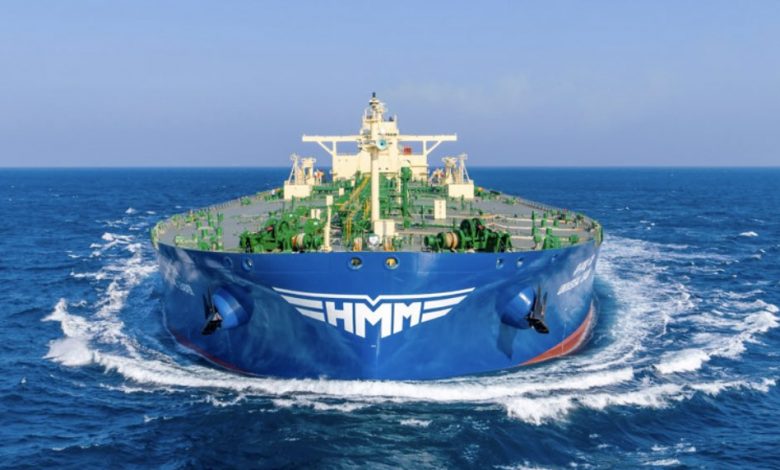Can tanker markets re-write the containership boom and bust playbook?

Holding back a newbuilding tidal wave is key to sustaining market health against as cloudy outlook, writes Tim Smith, director, Maritime Strategies International.
Tanker markets have moved markedly lower in Q2 2023, a moderation in earnings conditions that was in line with MSI’s expectations and a consistent feature of our outlook.
Spot market developments for crude and product tankers in April and May have seen a continuation in the overall trend down from the extreme highs witnessed in Q4 22.
For the April-May period, spot earnings are down by about one-third versus Q4 22 across the main tanker segments. This is a sizable drop but by no means catastrophic. Given the height earnings have reached, there is significant cushion. Markets have come down by a lot, but where do they go from here?
As illustrated in the MSI Q2 tanker market report, what these developments do show is that markets remain volatile. Demand-side conditions have been built on a turbulent restructuring of global oil trade, whilst trade volumes are being cut by OPEC+.
Uncertainty has also played a key role in supporting earnings. As we explained in late 2022, we believed that fundamentals in the market were good, but not necessarily great. Put another way, the market had got ahead of where it should be based on supply and demand factors, and a disruption factor has been baked into elevated rates, reflecting the upheaval the oil sector was seeing.
The situation the containership market found itself in 2020 is analogous, in some ways, to the tanker market’s current scenario. Three years ago the global economy and supply chains saw major disruption as a consequence of COVID-19.
This was combined with a rapid change in consumer spending which drove up demand for container shipments. As such, containership markets appreciated incredibly fast and reached unprecedented levels. Given the circumstances, these types of exponential earnings conditions can develop in any shipping market.
In fact, shipping history is littered with such examples. For participants it is easy to assume a new era has begun, and mistake disruption for durable growth.
Once this collective belief in an outlook of unconstrained upside has reached a critical mass, the next stage of a ‘classic’ shipping boom-bust cycle is to over-order new vessels.
This is where comparisons between the containership market and tanker market diverge, but not necessarily disconnect. Massive ordering of containerships accompanied sky-high freight markets, forming a huge bow wave of deliveries. Again, in time-honoured fashion, these deliveries are arriving just as demand conditions fade, leading the market to crash as dramatically as it had risen. The side-effect of such ordering was to fill up shipyards, driving up newbuild prices across all sectors, tankers included.
High shipbuilding prices and yard congestion have in turn been a major factor in deterring tanker orders, meaning that the sector is much better protected from any supply-side risk than at almost any other time in its history.
Reticence to order has been compounded by uncertainty over future fuels and the wider energy transition bearing down on oil use.

Despite the recent pick up in ordering in the first half of 2023, in pure deadweight terms, the market is likely to see contracting close to a five-year average, which includes very low ordering in 2022. As the Chart shows, that is in stark contrast to with containerships which saw ordering jump nearly six-fold between 2019 and 2021. The downside of this surge for containerships has now become manifest, but for tankers, even if contracting levels do pick up, they are unlikely to match such overly-optimistic levels.
This element of ‘protection’ is critical to our tanker market forecast. We do not expect the demand growth to continue in the longer term at the rates we have seen in 2022 and 2023. We have been consistent in expecting some moderation in markets across 2023, which has started to materialise. This is perhaps most notable in timecharter rates.
Given the volatility and noise in spot rates, they can be a difficult indicator to properly gauge market direction. Period rates provide perhaps a more useful gauge on underlying sentiment and fundamentals, given the commitment required from both parties in assuming longer-term deals.
The constraint on deliveries remains in place despite the reported reactivation of a large amount of newbuilding capacity over the last year or so. The reality is that much of this resurrection is in the planning or scaling up phase and won’t be contributing meaningfully to output for some time to come. This contrasts with ongoing reports of labour shortages at Korean yards and a clear cap on capacity in Japan.
The net effect of this will be to prolong both the delivery of the current bloated orderbooks for LNG and containerships, which in the process will keep newbuilding prices higher for longer as available berths are pushed tantalisingly into the future. The confluence of these factors has led us to raise our expectations for prices above the levels seen in our recent forecasts. This should be good news for shipyards, although it should be noted that profitability still remains elusive in 2023.
For the tanker sector, it is another factor constricting available supply growth over the coming years. When combined with future fleet obsolescence – which despite the current prevalence for old tonnage will become more important – the sector is very well protected from any weakness in the demand-side.
